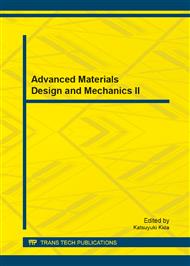p.34
p.41
p.45
p.49
p.54
p.62
p.66
p.70
p.75
Investigation of the Effect of Solidification Velocity on the Quality of Single Crystal Turbine Blades
Abstract:
The occurrence of high temperatures in combustion chambers of jet engines and gas turbines has led to the demand for new technologies and new materials for the manufacture of one of the most critical elements of these systems - the turbine blades. These elements have to withstand extreme temperatures for extended periods without loss of mechanical strength, conditions under which many alloys fail. Such failure is ascribed to the combination of high temperatures and high centrifugal forces, resulting in creep. This is especially prevalent in multi-crystalline structures in which grain boundaries present weaknesses in the structure. High temperature resistant alloys formed as single crystal (SX) structures offer the necessary material properties for safe performance under such extreme conditions. Modelling and simulation techniques were first used to study the directional solidification (DS) of crystal structures during vacuum investment casting. These models allowed the study of the dendritic growth rate, the formation of new grains ahead of the solid/liquid interface and the morphology of the dendritic microstructure. These studies indicated the opportunity to optimise the velocity of the solidification front (solidification rate) for single crystal structures. The aim of this study was therefore to investigate the effect of the solidification rate on the quality of SX castings. The investigations were carried out for nickel-based superalloy CMSX-4 turbine blade casts and rods using the Bridgman process for vacuum investment casting.
Info:
Periodical:
Pages:
54-61
Citation:
Online since:
August 2013
Keywords:
Price:
Сopyright:
© 2013 Trans Tech Publications Ltd. All Rights Reserved
Share:
Citation:


